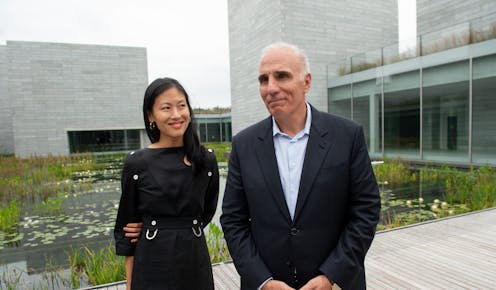
The Giving Pledge is a commitment by billionaires to voluntarily give most of their wealth to charitable causes either during their lifetimes or in their wills as bequests to be made after death.
More than 230 individuals and couples have made this commitment since investor Warren Buffett, Bill Gates and Melinda French Gates – who divorced the Microsoft co-founder in 2021 – created the pledge in 2010. In 2013, the Giving Pledge was opened to members outside of the United States. By my own calculations, pledgers come from 28 countries, and slightly more than 25% were born outside of the United States.
Everyone who signs on is encouraged to submit a letter elaborating their philanthropic philosophy, motives and giving preferences.
I have been analyzing these letters as part of my research regarding the philanthropic activities of the superrich, including their motives and priorities.
Why the Giving Pledge matters
Some critics argue that the Giving Pledge is nothing more than a publicity stunt, because there is no enforcement. It also does not require its members to disburse funds to nonprofits and other charitable causes.
Even when donors do uphold their commitment, they can simply transfer ample assets to a family foundation or a donor-advised fund – financial accounts in which donors reserve money they plan to give away later.
Despite those limitations, I see two main reasons the pledge matters.
First, it could potentially increase charitable giving, which totals nearly US$500 billion a year in the United States, if everyone who has signed on follows through. For example, Mitchell Rales, the co-owner of industrial conglomerate Danaher Corp., and his wife, Emily Wei Rales, joined the Giving Pledge in 2018. They recently shifted $3.3 billion in shares to their charitable foundations.
Second, it may have helped some very wealthy people articulate their ambitious philanthropic agendas. One example is MacKenzie Scott – a novelist who has given away more than $12 billion since her 2019 divorce from Amazon founder Jeff Bezos. Another is the former hedge fund manager John D. Arnold and his wife, Laura Arnold. They have committed to giving away at least 5% of their wealth annually.
[More than 150,000 readers get one of The Conversation’s informative newsletters. Join the list today.]
How many people could sign the pledge?
While estimates about the wealth of the richest people in the world vary, it’s clear that the number of billionaires is rising, along with the value of their assets. Forbes, which has tracked them for years, estimates that there are about 735 U.S. billionaires and a total of 2,668 worldwide.
Read other short accessible explanations of newsworthy subjects written by academics in their areas of expertise for The Conversation U.S. here.
Hans Peter Schmitz does not work for, consult, own shares in or receive funding from any company or organization that would benefit from this article, and has disclosed no relevant affiliations beyond their academic appointment.
This article was originally published on The Conversation. Read the original article.







